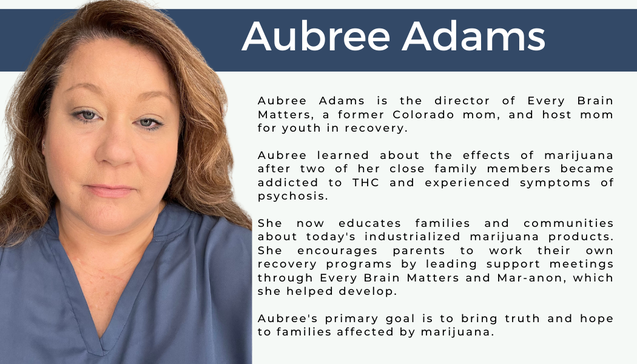Hour 1: "Debt vs Spending Reform" with Phil Kerpen, President of American Commitment
|
About our guest: Phil Kerpen
Phil Kerpen, a leading free-market policy analyst and advocate in Washington. He was the principal policy and legislative strategist at Americans for Prosperity for over five years. He previously worked at the Free Enterprise Fund, the Club for Growth, and the Cato Institute. Kerpen is also a nationally syndicated columnist, chairman of the Internet Freedom Coalition, and author of the 2011 book Democracy Denied. Phil Kerpen is the president of American Commitment, dedicated to restoring and protecting the American Commitment to free markets, economic growth, Constitutionally-limited government, property rights, and individual freedom. They engage in critical public policy fights over the size and intrusiveness of government through direct advocacy, strategic policy analysis, and grassroots mobilization. Working with key partners, American Commitment delivers timely, effective public policy research to the broader free-market movement. We are dedicated to restoring and protecting the American Commitment to free markets, economic growth, Constitutionally-limited government, property rights, and individual freedom. https://www.americancommitment.org/ |
More Debt Without Spending Reform Is Dirty | American Commitment
MORE DEBT WITHOUT SPENDING REFORM IS DIRTY
By Phil Kerpen
Before Republicans agreed to elect Kevin McCarthy Speaker of the U.S. House of Representatives, a handful of his colleagues demanded the implementation of a fiscal framework to rein in federal spending.
The threat of spending reduction has, however, launched a full debt ceiling “default” panic. The spending interests are trying to cast conservatives as unreasonable and spendthrift Democrats as saviors of our economy for favoring no-strings-attached increases in federal debt.
In the Orwellian world of Washington, the media and other Democrats call what they want a “clean” debt ceiling increase. But what could be dirtier than jacking up the limit on the national credit card with no plan to reform spending?
The rhetorical strategy they deploy to continue reckless spending is to insist the alternative to a naked debt ceiling increase is “default.” But a federal debt default is not a risk as long as there is more money coming into the federal government on a monthly basis than is owed in interest.
Over the past decade, paying interest on the debt consumed about 10 percent of monthly federal revenues, and in no month reached 20 percent. That means a scenario in which Congress does not raise the debt ceiling and the federal government is forced to operate on a cash basis presents no genuine risk of default.
It would be massively disruptive – much of the government would necessarily shut down and bills would not be paid in a timely fashion. But defaulting on the debt would not occur unless Treasury made the irrational decision not to pay bondholders with current revenue.
So-called experts who insist on “correcting” politicians who refer to a debt ceiling lapse as a shutdown are wrong, and Congress could take this deception off the table by passing a law clarifying that Treasury is required to pay bondholders first.
But while the “default” crisis from a lapse in the authority to issue additional debt is fake, the risk of a real debt crisis is visible on the horizon.
The latest long-term budget projections from the Congressional Budget Office show debt reaching a new all-time high of 107 percent of GDP in 2031 and soaring to 185 percent of GDP in 2052. This is driven almost entirely by federal spending, which is expected to remain higher than before the pandemic even after much of the one-time spending ends. Spending then significantly rises starting in 2025 until it reaches 30.2 percent of GDP in 2052.
Revenues for 2022 came in at 19.6 percent of GDP, the second highest level ever recorded – contrary to the predictions of Trump tax cut opponents – and projected revenues are expected to remain well above the historical norm of 17.3 percent of GDP and remain in the 18 to 19 percent range.
Congress must restrain federal spending before we face a real debt crisis in which we actually cannot afford to pay our bills.
Every major spending and debt deal in Congress since 1985's Gramm-Rudman-Hollings Act has included negotiations over the debt ceiling. House conservatives were right to demand spending reforms as a condition for raising the debt, and they should hold firm even if it means a government shutdown. The only clean outcome is one that sets spending on a more sustainable path.
Hour 2: "Every Brain Matters" with Aubree Adams
Our Mission
Every Brain Matters is a community and a unifying alliance of organizations and individuals that educate about the dangers of marijuana and the drug culture expansion.
We work together to bring about a cultural movement through advocacy, support/recovery, science, public awareness and encouraging the use of EBM merchandise to promote optimal brain and environmental health.
Our Vision
A worldwide coalition where we promote the health of our children, environment, and our future by decreasing the demand for drugs, empowering our families and communities, and supporting drug prevention, education, and recovery efforts. In time, the culture of Every Brain Matters will be accepted in a majority of households, schools, and communities.
JOIN OUR ALLIANCE
Key points:
It inspired many families to become educated about marijuana, and as a result, became an initiative of Parents Opposed to Pot.
Please join us at this link.
contact us at: [email protected]
Every Brain Matters is a community and a unifying alliance of organizations and individuals that educate about the dangers of marijuana and the drug culture expansion.
We work together to bring about a cultural movement through advocacy, support/recovery, science, public awareness and encouraging the use of EBM merchandise to promote optimal brain and environmental health.
Our Vision
A worldwide coalition where we promote the health of our children, environment, and our future by decreasing the demand for drugs, empowering our families and communities, and supporting drug prevention, education, and recovery efforts. In time, the culture of Every Brain Matters will be accepted in a majority of households, schools, and communities.
JOIN OUR ALLIANCE
Key points:
- Marijuana policy should be driven by science. Drug policies should be based on reputable science, not by profit-driven entities that support drug promotional policies.
- The best harm reduction is drug prevention. Keeping drugs illegal, along with providing education, decreases demand and use. Increasing accessibility increases use.
- Marijuana (drug) use affects more than just the user. It causes harm to innocent people, such as victims of drug-impaired driving, child neglect or abuse, second hand smoking, and accidental ingestion.
- The Marijuana expansion is increasing the mental health and addiction crisis, and we do not have resources available. Marijuana is a causal or risk factor in the addiction, mental illness, and homelessness crisis, as well as violence.
- Marijuana state regulatory policies have failed. The FDA approves medications and states do not have the necessary resources or knowledge to address this safely.
- The illegal marijuana market has grown exponentially as a result of legalization.
- Marijuana production is an environmental disaster, which interferes with the responsible stewardship of the planet. Growers divert streams, rob our water supply, and strain the electrical grid. Marijuana grows, which become more prevalent in legalized states on Federal lands, are cutting down forests, using banned pesticides and rodenticides, killing species, and depleting resources with no accountability.
- It causes widespread costs and societal harms, affecting all aspects of our lives. Increases car and health insurance, increases homeless, increases government spending (taxes), public health costs, loss of productivity, increases crime and violence, loss of potential, workplace safety costs, and rising business and housing costs.
- No use of marijuana in pregnancy or under the age of 25 is safe. It is well established that marijuana use is harmful to the deveolping brain.
- There is no proof high potency marijuana is safe for adult use. Cannainboind hyperemeisis syndrome, cannabis induced psychosis, and cannabis uses disorder rates are increasing.
It inspired many families to become educated about marijuana, and as a result, became an initiative of Parents Opposed to Pot.
Please join us at this link.
contact us at: [email protected]





